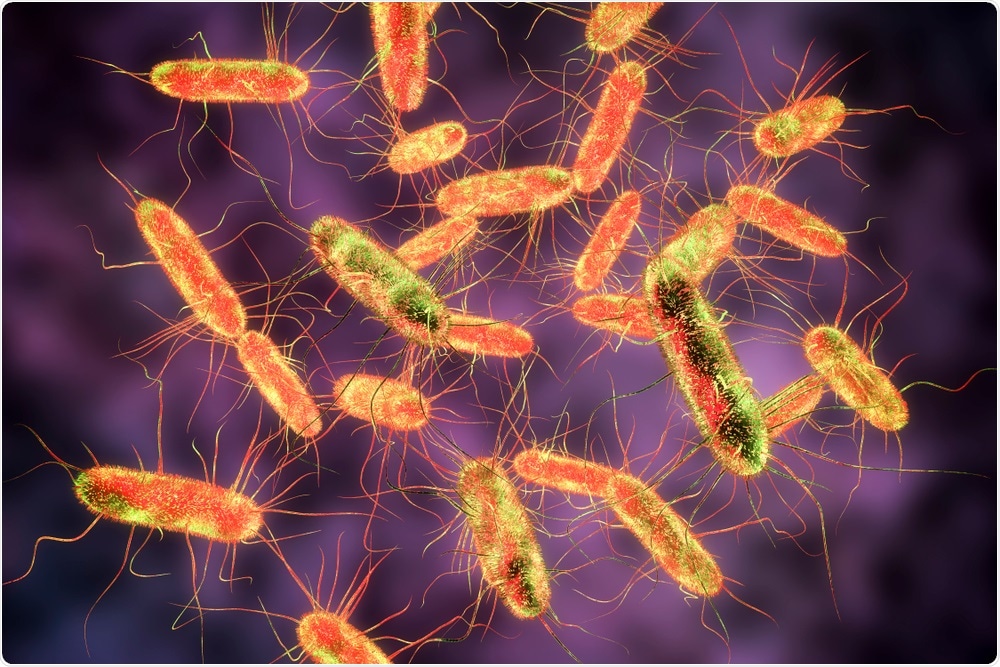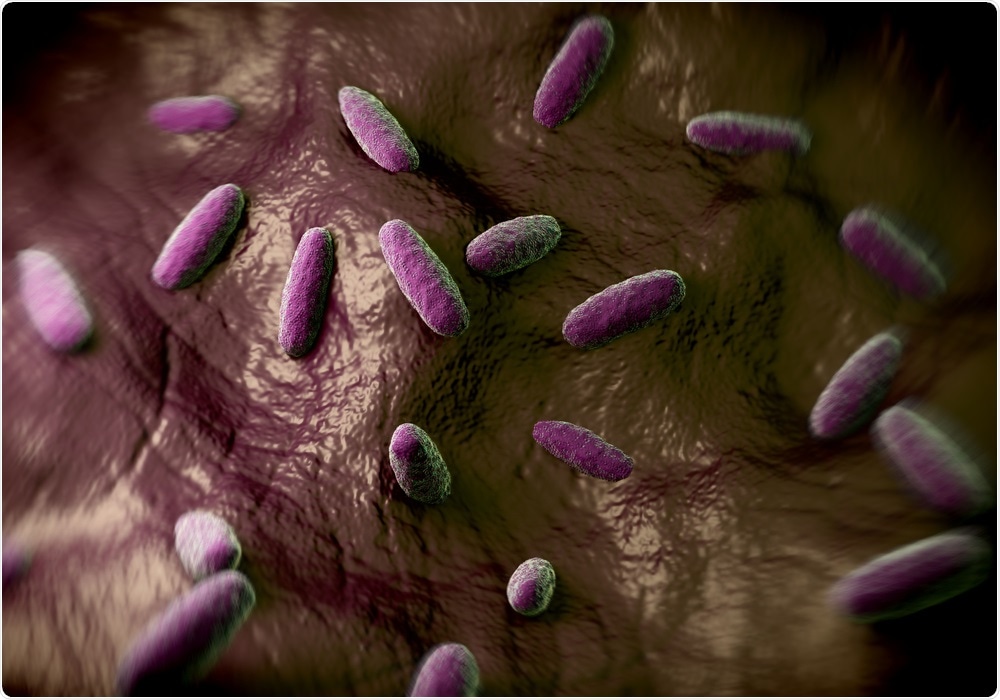Professor Ruiting Lan speaks to AZoLifeSciences about his research into tracking Salmonella poisoning and outbreaks.
Salmonella is a common bacterial disease causing 1.35 million infections each year in the US. What provoked your research into Salmonella?
My lab has had a long interest in Salmonella. Our work on Salmonella has been focused on its evolution and molecular epidemiology.
We have developed tools for surveillance of Salmonella infections and outbreak detection, and thus this work on rapid assays just published in The Journal of Molecular Diagnostics to determine the serotypes of Salmonella, is part of that endeavor.

Image Credit: Kateryna Kon/Shutterstock.com
How do salmonella infections occur?
The major route is foodborne. It occurs through ingestion of Salmonella contaminated food. It can also transmit from animals to humans.
According to the WHO: “Salmonella bacteria typically live in animal and human intestines and are shed through feces. Humans may become infected by ingesting contaminated water or food such as raw or undercooked meat, poultry, eggs, or egg products. Possible signs and symptoms of Salmonella poisoning include nausea, vomiting, abdominal cramps, diarrhea, fever, and headache.”
How many different serotypes of salmonella exist? What are the current testing methods available?
About 2600 different serotypes of Salmonella are known.
The traditional serotyping method is based on the agglutination of Salmonella bacteria with specific antisera that detect the O antigen and the H antigens.
There are also tests available based on the detection of genes determining the O antigen and H antigens.
What is multiple cross-displacement amplification and how does it work?
The basic principle of multiple cross-displacement amplification (MCDA) is isothermal amplification using a polymerase that has strong strand-displacement activity (the ability to displace downstream DNA encountered during synthesis) and DNA synthesis activity at a constant temperature around 60-65oC and a set of 10 primers covering 10 regions of the target, leading to highly specific exponential amplification of the target.
MCDA produces more products quicker than the polymerase chain reaction and therefore, can detect smaller amounts of the target faster. The original development was performed by another group (https://www.nature.com/articles/srep11902).
You have developed an assay that can differentiate between different serotypes of Salmonella. How does this assay work and why is it important to differentiate between serotypes?
The new assay is based on serotype-specific gene markers. We use MCDA to amplify the target genes.
One could use any other methods such as polymerase chain reaction (PCR) to amplify the gene markers.
We chose to use MCDA as it can detect very small amounts of DNA rapidly, and is also performed at a single constant temperature, in contrast to the cycling of temperatures required in other methods such as PCR, making it a good fit for a simple, rapid, and sensitive bacterial detection test.
Salmonella surveillance by public health laboratories involves monitoring different serotypes/subtypes to detect outbreaks. Thus, serotyping is an important public health surveillance tool.
What are the benefits of the assay you have developed compared to other testing methods?
The major benefit of this assay is that it uses serotype-specific markers to determine the serotype. The gene markers used were selected following the analysis of thousands of Salmonella genomes.
These markers are specific to the given serotypes, future-proofing our new tests.
The assay can be used to directly determine the serotype of the infecting strain, even without culturing the Salmonella bacteria. It is highly sensitive, specific, and rapid.
How will this assay help to trace the origin of Salmonella infections? Why is this important in cases of outbreaks?
Tracing the origins of Salmonella infections involves the identification of strains using different subtyping methods.
When a subtype is occurring above the usual levels of occurrence or in clusters, it signals an outbreak. Serotyping is often the first method used to differentiate subtypes.
Thus, serotyping is an important step in outbreak detection. This assay is fast and easy to use in determining the serotype of an infecting strain, therefore, helping to trace Salmonella infections and outbreaks.

Image Credit: royaltystockphoto.com/Shutterstock.com
What are the next steps in your research into Salmonella detection?
The assay has been developed using pure cultures. It will need to be validated using samples in health, environment, and food industry settings.
We are also conducting further research on next-generation sequencing for outbreak detection.
Where can readers find more information?
The paper on this new test is published in the Journal of Molecular Diagnostics (https://doi.org/10.1016/j.jmoldx.2020.02.006).
My other research papers on Salmonella can be found in PubMed (https://www.ncbi.nlm.nih.gov/pubmed/?term=Ruiting+Lan+AND+salmonella+%5BTITLE%5D)
Further information on Salmonella can be found on the US CDC website: https://www.cdc.gov/salmonella/index.html
Some quick facts can be found here: https://www.health.nsw.gov.au/
About Professor Ruiting Lan
Professor Lan is currently a Professor of Medical Microbiology at UNSW Sydney.
His main research interests are genomic epidemiology and the evolution of bacterial pathogens and zoonotic, emerging, and re-emerging bacterial infections. He has published over 170 papers with >8000 citations (https://scholar.google.com.au/citations?user=ZVjiv2kAAAAJ&hl=en).
You can find Professor Ruiting Lan’s research page here: https://research.unsw.edu.au/people/professor-ruiting-lan